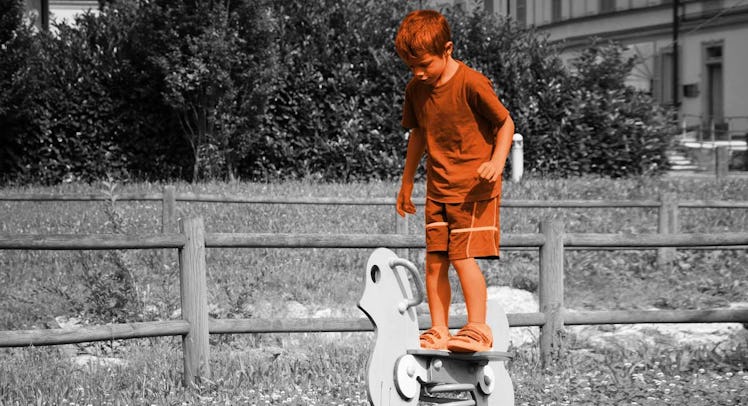How To Stop a Reckless Kid From Getting Into Trouble
Teaching a toddler prone to leaping before they look is a matter of modeling good boundaries.

Different kids have different temperaments. Some who’ve recently learned to move throw their body at the world, heedless of what they might run into. On the other hand, cautious kids might stick near mom and dad, waiting for things to come to them. Neither condition in a child is really preferable: one kid courts danger while another threatens to miss learning opportunities. Luckily, parents can help by creating experiences that either reinforce boundaries or encourage a kid’s self-imposed boundaries to be broken.
It’s important to note that there’s an important developmental reason kids might be reckless and adventurous. It’s a product of their curiosity, and curiosity is an incredibly good thing, according to Dr. Kathryn Smerling, a New York child and family therapist specializing in developmental issues.
“Curiosity is the hallmark of early childhood and a curious child is one who’s going to be very bright and very interested in the world and ask questions,” Smerling says. “That questioning child is a child that want answers. It’s a hallmark of intelligence and opening up to the world.”
With that in mind, it’s important that when parents are considering instilling a sense of caution through boundaries they are not also putting a cap on a child’s sense of discovery. “You have to be careful with caution because you don’t want to inculcate fear in your toddler. But you do want to model what’s safe and what’s not,” Smerling advises.
They key word is “modeling.” For much of their life, and particularly in toddlerhood, children look to parents as the prime example of how to navigate the world. They observe and come to understand the world through parents. And because they are at a developmental age where verbal communication and explanations are not particularly helpful, experiences become key.
Smerling notes that if a parent wants a child to understand the stove is hot they may have to pantomime the experience of getting burned. They can approach the stove and reach out in an animated way before pulling their hand back with exaggerated pain, saying “Ouch! Hot!”
“It’s important to do,” says Smerling. “No one wants a child to stick their hand in the oven because they’re adventurous. But you have to make it experiential because that’s how children learn at that age.”
How to Help a Reckless Toddler Learn Caution
- Understand that recklessness, adventurousness, and curiosity go hand and hand. They are important to children and you do not want to wipe them out.
- Toddlers will not learn caution through language, parents need to model caution through role play and experience.
- Setting physical boundaries where children can and cannot play wildly is another method for experiential learning.
- Cautious toddlers can be coaxed out by playful parents willing to act model curiosity.
But what about the child whose temperament finds them hesitant to venture away from their parents?
“Children who are totally withdrawn and not curious about the world are kids that we really have to worry about,” explains Smerling. “Because that also means they’re not having fun. Curiosity and play go together.” And the solution there is both simple and happy. Withdrawn kids just need to play more. Simple as that.
Above all, Smerling urges parents to remain watchful with their children. Boundaries may need to become broader or more narrow depending on their development. And that development is ever changing. “Development is so uneven,” she says. “It’s jagged, you never know when a child is going to emerge from one stage of development into another. You have to be mindful and watchful.”
This article was originally published on